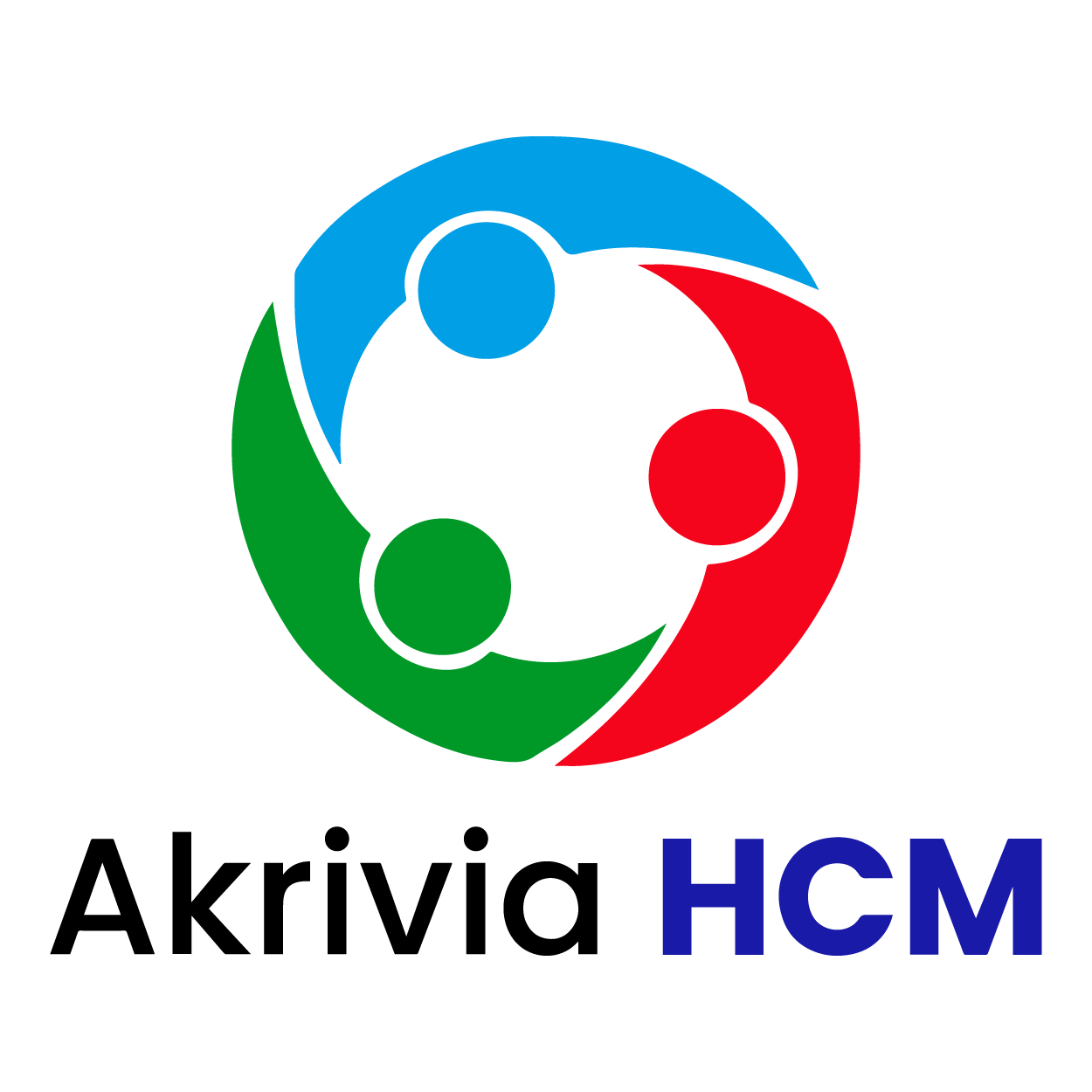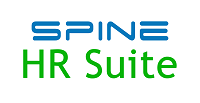Description

Akrivia HCM

OrangeHRM
Comprehensive Overview: Akrivia HCM vs OrangeHRM
Akrivia HCM and OrangeHRM are both Human Capital Management (HCM) systems designed to help organizations manage their workforce efficiently. They cater primarily to different segments of the market and have unique characteristics that differentiate them.
Akrivia HCM
a) Primary Functions and Target Markets:
- Primary Functions: Akrivia HCM offers a comprehensive suite of HCM solutions, including Recruitment & Onboarding, Core HR, Payroll Management, Talent Management, Time & Attendance Tracking, Performance Management, Learning & Development, Employee Self-Service, and Analytics & Reporting.
- Target Markets: Akrivia HCM targets midsize to large enterprises across various industries. It is particularly focused on companies looking for an integrated solution that can handle complex HR processes and offers customization to fit specific organizational needs.
b) Market Share and User Base:
- Akrivia HCM is a growing player in the market, particularly in regions such as Asia and the Middle East. Its user base is expanding as it targets enterprises seeking scalable solutions that can handle a global workforce.
- In terms of overall market share, it is still building its presence compared to well-established HCM providers but is gaining traction due to its comprehensive suite and flexible deployment models.
c) Key Differentiating Factors:
- Customization and Flexibility: Akrivia stands out with its ability to offer tailored solutions for companies with unique HR processes and structures.
- Scalability: It is designed to handle complex and large-scale HR environments, making it an attractive choice for large organizations with diverse needs.
- Comprehensive Suite: The platform's range of offerings covers almost all aspects of HR management, providing a one-stop solution for enterprises.
OrangeHRM
a) Primary Functions and Target Markets:
- Primary Functions: OrangeHRM provides essential HR functionalities such as Recruitment, Employee Information Management, Leave & Attendance Management, Performance Management, Time Tracking, and Payroll. It also features modules for reporting and compliance.
- Target Markets: OrangeHRM primarily targets small to medium-sized businesses (SMBs) that need a cost-effective, easy-to-use HR solution without the complexity of larger enterprise systems.
b) Market Share and User Base:
- OrangeHRM is one of the popular choices among open-source HR management systems and has a significant presence among small to mid-sized businesses globally.
- It has a sizable user base owing to its affordability and ease of deployment, especially appealing for organizations looking to keep costs low while digitizing their HR functions.
c) Key Differentiating Factors:
- Affordability: OrangeHRM is known for its cost-effectiveness, offering a free open-source version with essential HR functionalities and reasonably priced advanced features.
- Simplicity and Ease of Use: The platform is designed to be user-friendly, making it an attractive choice for smaller organizations with limited IT resources.
- Community Support: As an open-source solution, OrangeHRM benefits from a community of users and developers that contribute to its continual improvement and customization.
Comparative Overview:
- Market Position: Akrivia HCM is progressively establishing itself in the enterprise segment, whereas OrangeHRM caters to smaller organizations.
- Deployment: Akrivia offers both cloud-based and on-premise solutions, targeting enterprises with varied IT infrastructure requirements, while OrangeHRM's open-source nature makes it particularly versatile for SMBs looking for customizable solutions.
- Functionality: Akrivia provides a more extensive suite of features suited to complex organizational needs, while OrangeHRM focuses on the simplicity and essential features that smaller businesses require.
Each platform has its strengths and is suited to different types of businesses, depending on the size of the organization, the complexity of its HR needs, and budget considerations.
Contact Info

Year founded :
2018
+91 98668 98768
Not Available
India
http://www.linkedin.com/company/akrivia-hcm

Year founded :
2006
+1 914-458-4254
Not Available
United States
http://www.linkedin.com/company/orangehrm
Feature Similarity Breakdown: Akrivia HCM, OrangeHRM
When comparing Akrivia HCM and OrangeHRM, both are powerful HR management systems with a range of features designed to simplify and enhance human resource management. Here's a breakdown of their feature similarities and differences:
a) Core Features in Common
-
Employee Database Management: Both platforms offer robust databases for storing and managing employee information, such as personal details, job titles, and employment history.
-
Recruitment and Onboarding: They include tools to manage recruitment processes, from job postings to application tracking, and onboarding features to streamline the process for new hires.
-
Leave and Attendance Management: Each provides functionalities for managing employee attendance, leave requests, and approvals, alongside tools for tracking time off balances.
-
Payroll Management: Both offer payroll processing features to automate salary calculations, deductions, and compliance with tax regulations.
-
Performance Management: Tools for conducting performance reviews, setting goals, and tracking employee progress are available in both systems.
-
Self-Service Portals: Both platforms feature employee self-service portals where employees can manage their information, submit requests, and view payslips.
-
Reporting and Analytics: They offer reporting capabilities to help HR teams analyze workforce data, generate insights, and inform decision-making.
b) User Interface Comparison
-
Akrivia HCM: Known for its relatively modern and intuitive interface, Akrivia HCM emphasizes ease of navigation and accessibility. The design is often user-friendly, with dashboards that provide quick overviews of key HR metrics. It usually incorporates customizable elements to suit different organizational needs.
-
OrangeHRM: OrangeHRM offers a clean and straightforward interface but can sometimes appear less modern compared to some contemporary systems. It typically provides a more traditional setup, which can be familiar and straightforward for users who prefer simplicity over advanced design.
Both interfaces are designed to facilitate a positive user experience, though Akrivia HCM may offer a slightly more modern look and feel.
c) Unique Features
-
Akrivia HCM:
- Custom Workflows: Akrivia HCM often emphasizes its customizable workflows that allow organizations to tailor processes to their specific needs.
- AI Integration: It may provide more advanced AI-driven features for data analysis and decision-making.
- Mobile Application: Offers versatile mobile app capabilities for wider workforce accessibility, including offline features.
-
OrangeHRM:
- Community and Open Source: Known for its open-source edition, OrangeHRM allows users to customize the software for their specific needs at potentially lower costs.
- Marketplace Extensions: OrangeHRM features a marketplace for various extensions and plugins to enhance functionality.
- Global Reach: Provides extensive support for multiple languages and regions, making it suitable for multinational organizations.
Both systems offer unique strengths that cater to different organizational needs, and the choice between them may depend on specific functional requirements, budget considerations, and user preferences for interface and customization.
Features

Not Available

Not Available
Best Fit Use Cases: Akrivia HCM, OrangeHRM
When considering Akrivia HCM and OrangeHRM, it's important to evaluate the specific needs and characteristics of the business or project at hand, as each platform is designed to cater to different requirements.
Akrivia HCM
a) Best Fit Use Cases:
- Medium to Large Enterprises: Akrivia HCM is particularly suitable for medium to large businesses that require comprehensive HR management functionalities. The platform offers robust modules such as payroll, talent management, and performance management which are essential for larger organizations.
- Industries with Complex HR Needs: Industries that have intricate HR requirements, such as manufacturing, healthcare, and IT, can benefit from Akrivia’s extensive feature set. The platform’s ability to handle complex HR operations and its scalability make it an advantageous choice.
- Businesses Seeking Customization: Akrivia HCM offers a high degree of customization, allowing businesses to tailor the platform to fit their specific HR processes and workflows.
OrangeHRM
b) Preferred Use Cases:
- Small to Medium Enterprises (SMEs): OrangeHRM is very favorable for small to medium-sized businesses that need essential HR functionalities without the overhead of too many complex features. Its ease of use and affordability make it a practical choice for smaller organizations.
- Startups and Growing Businesses: For startups or rapidly growing businesses that require a scalable solution, OrangeHRM provides a solid foundation with core HR features and potential to expand as the business grows.
- Organizations New to HR Software: Companies transitioning from manual HR processes to digital solutions may find OrangeHRM’s user-friendly interface and essential features to be an ideal starting point.
Industry Verticals and Company Sizes
Akrivia HCM
- Industry Verticals: Akrivia HCM caters to various industry verticals by providing industry-specific solutions, such as compliance management for healthcare or manufacturing, and skills tracking for IT companies.
- Company Sizes: Best suited for mid-sized to large companies due to its comprehensive feature set and capability to manage complex HR operations across multiple locations or departments.
OrangeHRM
- Industry Verticals: While not specifically designed for particular industry verticals, OrangeHRM’s modularity allows it to be a good fit across various industries, providing basic customization to meet specific industry needs.
- Company Sizes: Ideal for small to medium-sized companies due to its cost-effectiveness and essential HR functionalities. Its modular approach means companies can start small and progressively add more features as they expand.
Both platforms offer distinct advantages, with Akrivia HCM being a better fit for larger organizations with more complex needs, while OrangeHRM excels in providing essential HR tools to SMEs looking for ease of use and scalability. The choice between the two should be guided by the specific HR challenges and goals of the business in question.
Pricing

Pricing Not Available

Pricing Not Available
Metrics History
Metrics History
Comparing teamSize across companies
Conclusion & Final Verdict: Akrivia HCM vs OrangeHRM
When evaluating Akrivia HCM and OrangeHRM, it's important to consider several factors, including features, scalability, ease of use, customer support, pricing, and the specific needs of your organization.
Conclusion and Final Verdict
a) Considering all factors, which product offers the best overall value?
Overall, both Akrivia HCM and OrangeHRM offer robust human capital management solutions, but their suitability depends largely on the specific needs and context of the organization. In terms of overall value, OrangeHRM may have a slight edge for small to mid-sized businesses due to its open-source version and flexibility in customization. This can lead to cost savings and allows businesses to tailor the software to their needs without extensive overhead. However, for companies looking for an all-encompassing, scalable HCM solution with advanced analytics and AI-driven features, Akrivia HCM could be more attractive due to its modern interface and comprehensive features.
b) Pros and Cons of Choosing Each Product
Akrivia HCM:
-
Pros:
- Comprehensive suite with advanced analytics and AI-driven features.
- Modern and user-friendly interface.
- Suitable for both large enterprises and SMEs.
- Strong emphasis on integration capabilities with other software solutions.
-
Cons:
- Higher initial cost compared to some competitors.
- Implementation may be complex for companies without dedicated IT support.
- Less well-known, which might pose a risk regarding future updates and community support.
OrangeHRM:
-
Pros:
- Open-source version is available, offering cost-effective solutions for smaller businesses.
- Highly customizable due to its open-source nature.
- Established reputation and large user community.
- Intuitive interface and essential HR functionalities.
-
Cons:
- May require more technical expertise to customize and extend.
- Some advanced features might require paid versions.
- Scalability might be limited compared to more comprehensive solutions like Akrivia HCM.
c) Specific Recommendations for Users Trying to Decide Between Akrivia HCM vs OrangeHRM
-
Assess Organizational Size and Needs: Small to mid-sized businesses with constrained budgets or seeking customizable solutions might benefit more from OrangeHRM, especially if they can leverage their IT resources for customization. On the other hand, larger enterprises or those with complex HR needs might find Akrivia HCM a better fit due to its comprehensive features and scalability.
-
Evaluate Technical Expertise: Organizations with limited technical resources should consider the ease of implementation and ongoing support. Akrivia HCM might provide more integrated support services, whereas OrangeHRM might require in-house expertise for customizations.
-
Budget Consideration: If cost is a primary concern, starting with the open-source version of OrangeHRM could be attractive. However, consider potential costs for any advanced features that may not be included in the free version.
-
Future Scalability and Growth: Consider long-term scalability needs. Akrivia HCM might better support organizations expecting significant growth, given its broader feature set and focus on AI-driven insights.
Ultimately, the decision should align with the company’s current HR demands, budget constraints, and long-term strategic goals.
Add to compare
Add similar companies



